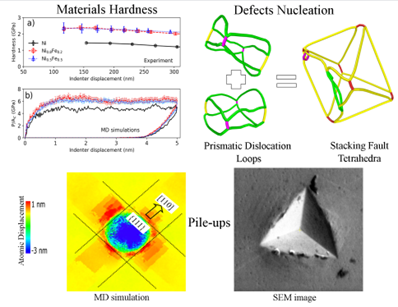NOMATEN’s new scientific paper: Effects of Fe atoms on hardening of a nickel matrix: Nanoindentation experiments and atom-scale numerical modeling
The authors team are the following: L. Kurpaska (Research group leader- Functional Materials); F.J. Dominguez-Gutierrez PhD; Y.Zhang (University of Tennessee at Knoxville); K. Mulewska MsCs.; H. Bei (Zhejiang University); W.J.Weber (University of Tennessee at Knoxville); A. Kosińska Ms Cs; W. Chrominski (Warsaw University of Technology); I. Jozwik (Research group leader-Materials Characterization); R. Alvarez-Donado PhD; S. Papanikolaou (Research Goup Leader - Materials informatics Structure and Function); J. Jagielski (NOMATEN CoE Teaming Director); and M. Alava (NOMATEN CoE Director and Research Group Leader - Complexity in Materials).
The paper is available here: https://doi.org/10.1016/j.matdes.2022.110639
Abstract: Significant hardening effect due to Fe concentrations in Ni-based alloys with face-centered-cubic structure has been studied by using a combined experimental and atomistic-based computational approach via nanoindentation tests. The obtained experimental load–displacement data for the [0 0 1] crystal orientation reached a qualitative good agreement with molecular dynamics simulations results, leading to strong evidence that the main strengthening factors are associated to sluggish dislocation diffusion, reduced defect sizes and the nucleation of tetrahedral stacking faults. Here, interstitial type prismatic dislocation loops mainly formed by ⅙〈1 1 2〉 Shockley dislocations are nucleated during the loading process, where their interaction leads to the formation of pyramidal shaped stacking fault which are mainly created by ⅓〈1 0 0〉 Hirth dislocations lines. Observing both types of defects coexisting in the same plastic deformation zone by both approaches. Reported mechanical data, measured experimentally and interpreted numerically, are also in accordance with microstructural SEM and TEM investigations.










